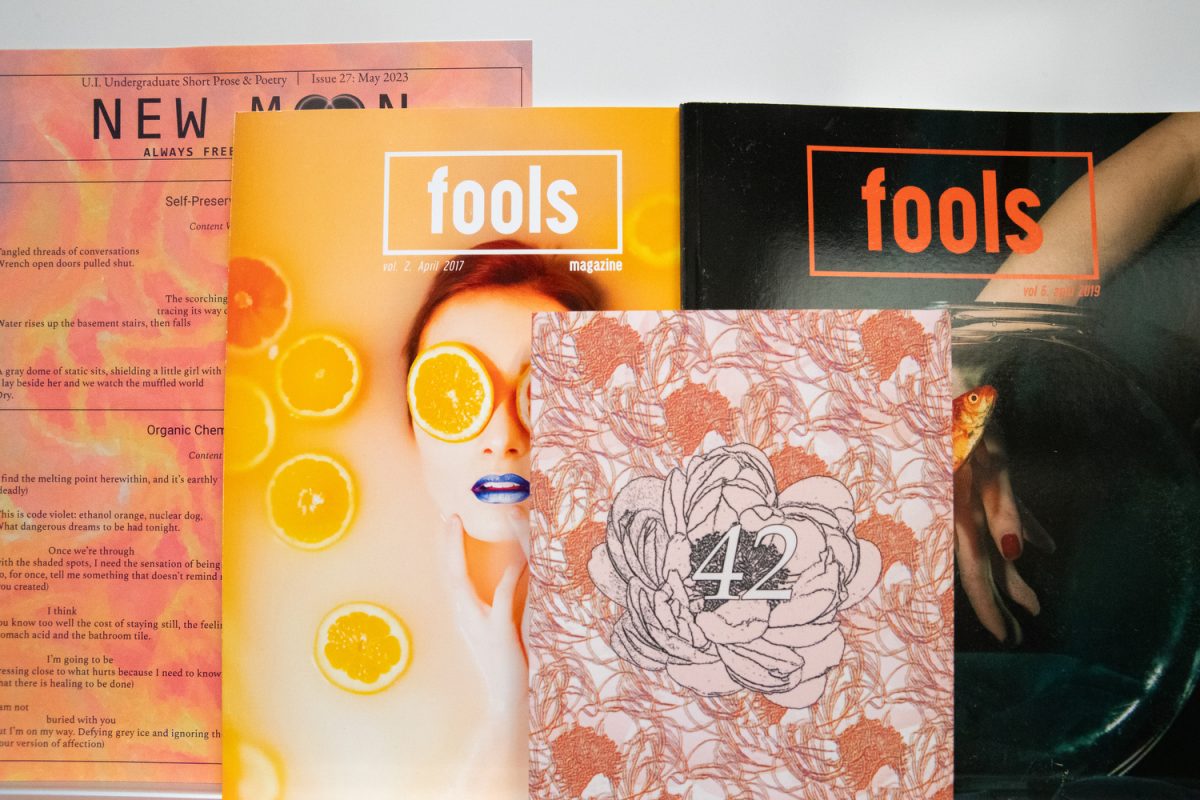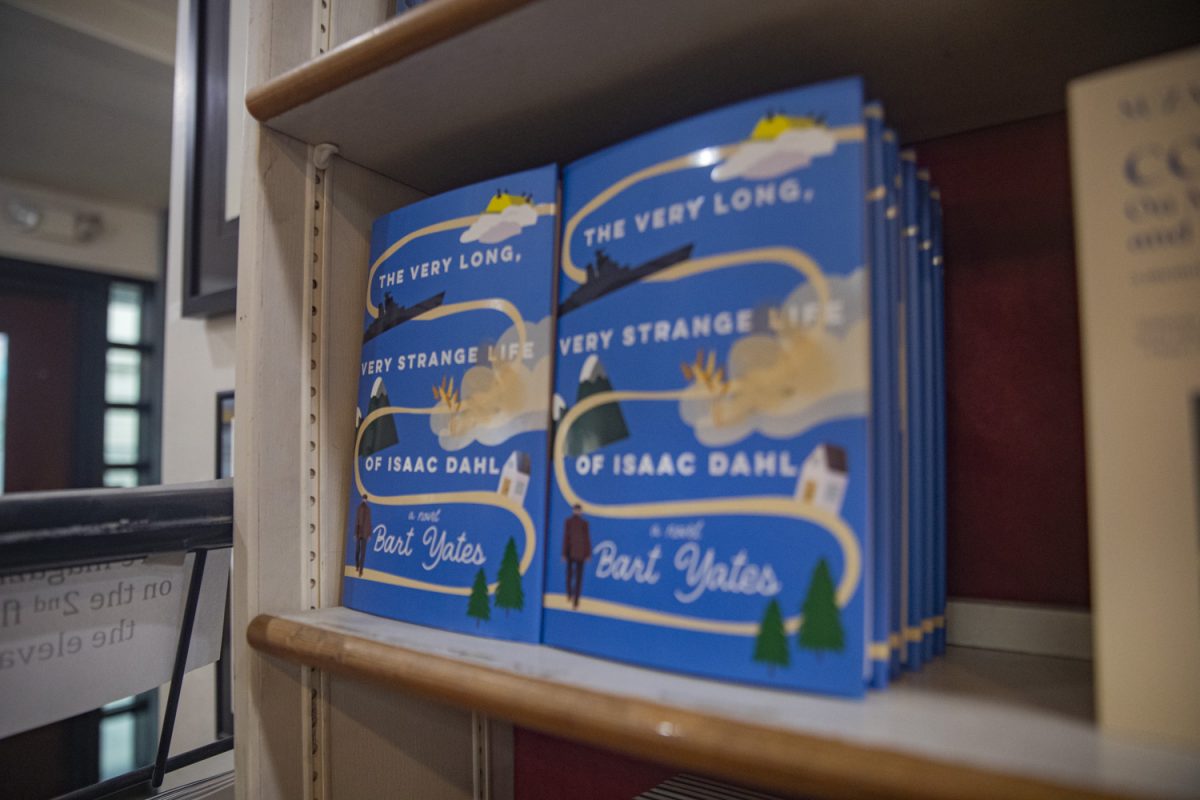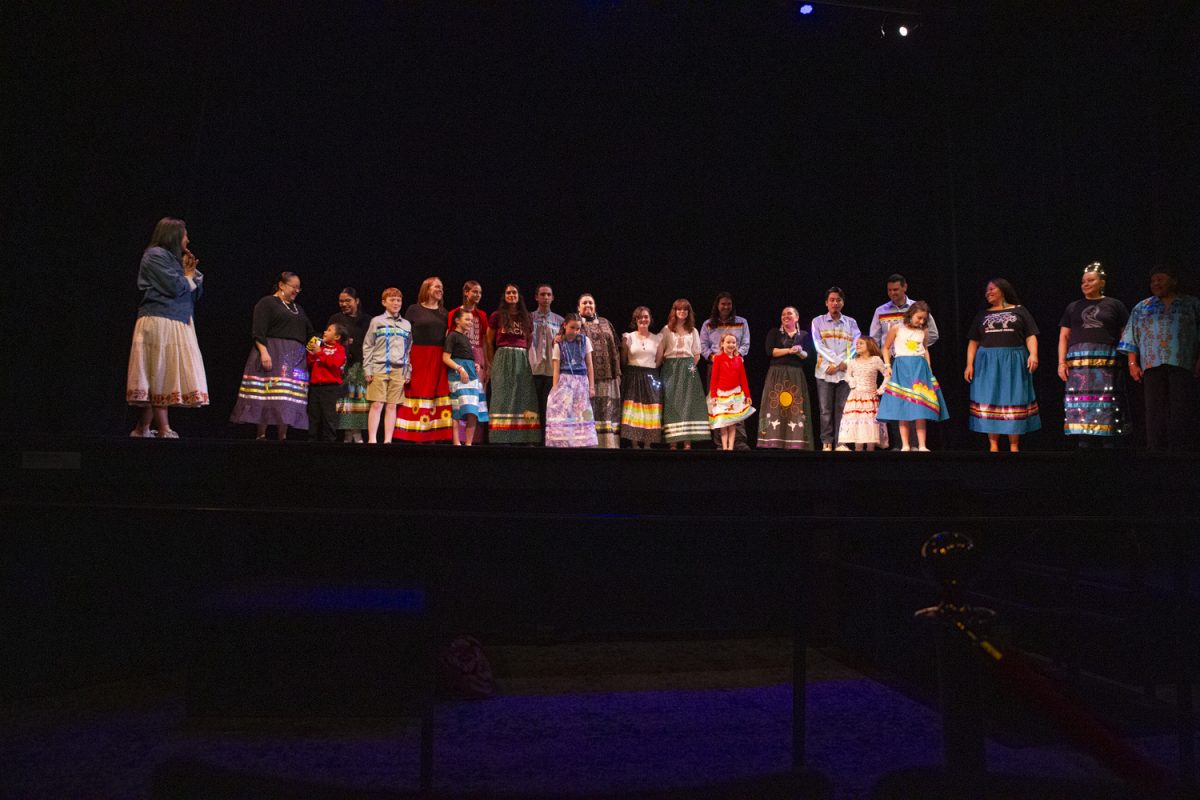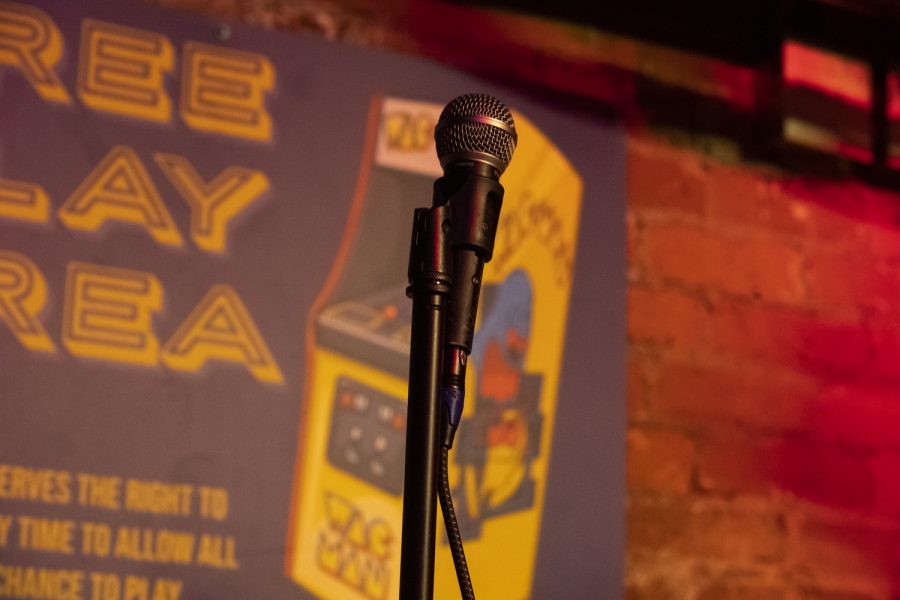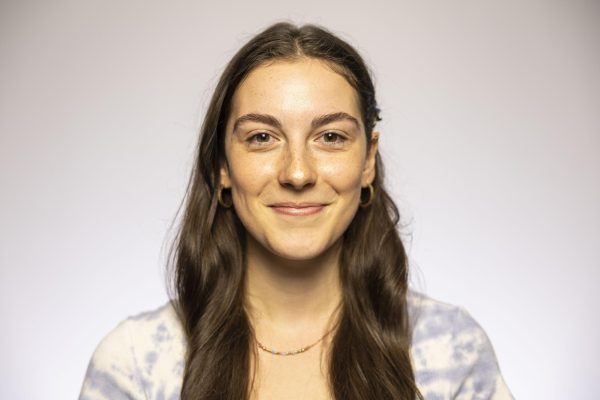As an English and Creative Writing major on the publishing track, Sydney Smithgall has had no better opportunity to explore a career in publishing than with their role on the staff of the literary magazine New Moon at the University of Iowa.
Smithgall is the executive editor of New Moon, a monthly literary magazine founded in 2020 that focuses on flash fiction and prose.
“I feel that my experience working for literary magazines has been as important, if not moreso, than the classes I’ve been taking,” Smithgall said.
Every literary magazine on campus operates similarly to a professional publishing house, involving staff meetings, leadership positions, editing, and regular print and digital editions.
Smithgall believes the skills they learn and the connections they make on the staff of New Moon will benefit them after graduation.
“Honestly, being able to have hands-on experience in working with a team and leading the team and working with submissions hands-on may be kind of scaled down to have a community-oriented focus in the University of Iowa and Iowa City, but it feels very much scalable once I graduate and be able to go kind of make connections and everything like that,” Smithgall said.
UI students are immersed in the world of publishing through literary magazines supported by the Magid Center for Writing, which provides essential publishing experiences and professional skills.
As of 2023, the UI is tied with Yale, ranking fifth in the nation for writing in the disciplines. It is only fitting that the UI offers a rich array of literary magazines for students to submit their writing.
The UI boasts a total of 12 literary magazines on campus. Compared to most other colleges across the nation, this number is unusually high according to NewPages’ list of student literary magazines across U.S. universities.
Nine of the publications are sponsored by the Magid Center for Writing, a department established in 2011 committed to helping students improve their communication and written language skills. The center operates as part of the UI College of Liberal Arts and Sciences Dean’s Office within their Outreach and Engagement Hub.
Before the Magid Center’s establishment, the only literary magazine on campus was Earthwords, a yearly undergraduate literary review that has published student works of poetry, fiction, nonfiction, drama, and art for nearly 44 years. Today, Earthwords continues to publish a diverse range of content, host open mic events, and showcase readings for undergraduates.
The second magazine founded on the UI campus was Ink Lit Magazine, a biannual publication led by first-year undergraduate students that focuses on freshman works of poetry, fiction, nonfiction, drama, and art.
Ink Lit was followed by Fools, Wilder Things, Horizon, Boundless/Translate Iowa Project, New Moon, and snapshots, all founded within the last decade. The newest Magid-sponsored publication to open submissions is Catharsis, founded earlier this year.
Director of the Magid Center for Writing Daniel Khalastchi frequently convenes with the student leaders of several magazines. He said students should remember that the editing and publishing aspects of literature are factors in the UI’s top writing program ranking just as much as creative writing, and literary magazines exemplify this.
The magazines receive additional support from organizations like the UI Undergraduate Student Government, which allows the publications to apply for funding outside of the budgets and resources provided by the Magid Center. For the most part, the Magid Center is willing to restructure budgets as much as possible to facilitate any pursuits of a publication, Khalastchi said.
Not only is support for literary magazines interdisciplinary but so is the relationship between them. Despite being independent publications, the magazines frequently collaborate for staff functions and promotional events.
Part of what makes the collection of literary magazines so coherent is that each one publishes a certain niche of content. These niches prevent the publications from butting heads because their individual content is so specialized.
RELATED: ‘Brink Literary Journal’ holds contest for hybrid writing
For example, Wilder Things only publishes speculative fiction, which is defined as any genre of fiction that includes supernatural, futuristic, or fantasy elements, said Braja Servin, the magazine’s managing and production directing assistant.
“We want people to feel comfortable submitting those types of pieces because they may not feel as comfortable doing so in their workshop classes,” Servin said.
Wilder Things releases an issue at the end of each semester after about two to three weeks of workshopping the chosen submission pieces, designing the cover, and marketing for the edition.
If a student wants to publish a short story, or what is known as “flash fiction,” they can submit to New Moon. Because of the length of its content, New Moon publishes a one-page issue every month.
Publishing a one-page monthly instead of semesterly or yearly is a unique and slightly more demanding experience for New Moon staff members, but involvement with the magazine is invaluable, nonetheless.
If students want to write for a younger audience, they can submit to snapshots, which publishes pieces for readers between ages 4 and 14. snapshots is one of the UI’s newest literary journal additions, formed in 2021 by students who wanted to be able to show their siblings creative work from college students.
snapshots — a magazine focused on children’s literature — may appeal to students who are intimidated by the idea of submitting work written for older audiences, according to Abigail Adams, the public relations manager of snapshots.
“It’s very colorful and it feels like everyone can come and reminisce on children’s literature of their past,” Adams said.
Horizon is a magazine that runs in a similar vein in the sense that it focuses on broad, light-hearted themes like “hope.” It also acknowledges pessimistic perspectives on themes like hope to represent individual experiences that may not be completely positive.
The wealth of literary magazines at the UI creates an outlet for not only creative writing students to take a break from academic writing but also for students who are not majoring in English to express themselves.
“We definitely had some pieces last year that were from people who are not English majors and not creative writing majors who had no interest in pursuing it as a career. It was just fun for them. It was just a hobby,” said Ellie Maranda, the editor-in-chief of Horizon.
Although there are nine magazines sponsored by the Magid Center, those are not the extent of student-based publishing opportunities at the UI. Some magazines not affiliated with the Magid Center include Broken Clock Magazine and Cave Writing.
Cave Writing focuses on publishing longer-form stories divided into chapters, said Margo Keller, the assistant executive editor of Cave Writing.
“I just wanted to have a place like a safe haven for novelists to encourage them to keep on working on their big things they care about,” Keller said.
“What matters is if they want to get involved and if they believe in literature, writing, the concept of empathy, the idea of professionalism and they just want that experience, we have a unique way for them to gain those skills and, most importantly, commit themselves to something larger than who they are as individuals,” Khalastchi said.





